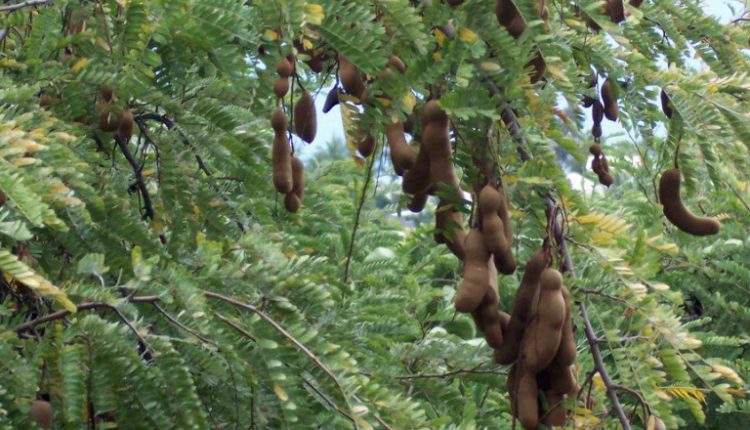The historical “Ajagbon” tree in Ogbomoso, previously growing by the fence in the eastside of the palace, has fallen, presumably after more than 500 years of existence. The tree fell in the early hours of Saturday, May 21, 2022, during an eighteen hour rainfall, which began in the evening of Friday, and stopped at about 10am Saturday. The tree which had gradually dried off was totally uprooted away from the fence, drawing the curtain on an important epoch.
The loss of the tree is very significant in the history of Ogbomoso as it is reputed to be the first shelter in the locality initially known by that name. Under the tree, in about the year 1650, a brave hunter and warrior, dexterous in the use of bow and arrow, built his camp and settled therein. There is no account of when the tree started growing, what is captured in record books nonetheless, is that the first settler, Ogunlola Olabinjo Ogundiran, set his camp under the tree in about that year, from where he embarked on his hunting expeditions. It should however be noted that Ogunlola met four other settlers in the vast area, which independently evolved into separate communities with distinct names before Ogunlola’s, which eventually took on the name Ogbomoso, encompasses them both physically and taxonomically. Ogunlola lived long under this tree with his wife, Lorungbekun, and later his children. It is from here the community fanned out octopus-like to what it is today, and the palace built less than 50 metres from the tree’s location.

The tree was conserved over the years; it became a living monument, surviving many vagaries until now. The tree however played an important role during the annual Olele Festival, as under it the reigning Soun would sit resplendently, to receive homage from the members of the Soun Dynasty’s ruling houses who file past, each with their traditional egungun (masquerade).
The beginning of its end
ogbomosoinsightonline.com could not verify the lifespan of the tree as at the time of this publication to determine whether or not it had reached its expiration date, however, what could be the immediate cause of its “death” was the construction of the new four lane road undertaken by the administration of the late governor of Oyo state, Senator Abiola Ajimobi, during the last decade. “The loss of vitality of the tree was first noticed after the road construction,” a resident of the area began, adding, “Then, the tree started to dry off progressively until it fell this morning during a heavy rainfall.” Beside the tree was a lane of the road (a one-way section), and it was very likely that during the mentioned construction project, which involved heavy equipment, the roots of the tree got damaged irrecoverably, provoking the tree being cut off from (adequate) soil nutrient and thus denuded of nourishment needed for proper growth.
Ajagbon tree and controversy over name!
The Yoruba name of the tree is Ajagbon; common name is tamarind; and botanical name, Tamarindus indica. However, there is a controversy over its Yoruba name. Adewuyi Adegbite, a historian and public commentator, asserted that tamarind is not Ajagbon in Yoruba, affirming that Ajagbon is actually a tree called “Agbon Eye,” (Blue Sky Palm).
He attributed the name”Ajagbon” to this tree “because its fruit looks like that of coconut tree (Agbon),” i.e. “O jo Agbon.” If his postulation is correct, then, tamarind is not Ajagbon!
Meanwhile, tamarind is a tropical tree, which, according to Wikipedia, probably originated in Africa, where it grows in the wild, and from where it is taken to South Asia and other regions. India, followed by the United States, is the largest producer of tamarind in the world today, where it is popular for its cuisines. It is a leguminous tree bearing edible fruit. It produces brown, pod-like fruits that contain a sweet, tangy pulp, used in cuisines while the pulp is used in traditional medicine and as a metal polish. The tree’s wood can be used for woodworking and oil is extracted from its seed. They are also used as ornamental, garden and cash crop plantings. Wikipedia further describes the tamarind as “a long-lived, medium-growth tree, which attains maximum crown height of 12 to 18 metres (40 to 60 feet).” It grows well in full sun and is highly resistant to drought and unfavourable soil conditions. Its fruit, an indehiscent legume, is sometimes called a pod with a hard, brown shell.
Few other locations of the tree
ogbomosoinsoghtonline.com has found this tree growing at Ijeru market in Ogbomoso South local government area, and at the village square in Aaje Ologo, a suburb of Ogbomoso. That of Aaje, according to its Baale, Chief Reuben Adesina Amao, was planted few years ago. And according to Irawo Owuro magazine, published by Mogaji Adisa Adeleye (died January 17, 2022), in its October – December edition of 2021, “planted species of the tree are in the present Ajayi Crowder University (planted 1936) and in Moor Plantation, Ibadan (planted 1930) including the massive specimens at Apata area in Ibadan.”
Advocating the tree be adopted as Ogbomoso’s national tree, the Irawo Owuro magazine in that special report (on the tree) opined that tamarind tree should be “extensively planted in Ogbomoso, particularly in all local government offices as the traditional tree of Ogbomoso.”
Meanwhile, the magazine observed the grueling condition under which the Ajagbon tree was growing in the palace, by the fence, therefore urging that it be divested of the encumbrance to forestall its early death. It had written, “The tree in the Soun’s palace is in a very restricted location. It needs to be freed from the fenceline and allowed to grow more freely and show its full growth potentials. Presently, it is restricted and this may result in its death because it has lost its vigour because of age.” This was ignored and this warning had become like prophesy, one already fulfilled! Perhaps, another Ajagbon tree or whatever its name is, should be planted at that spot of the deceased tree, to preserve the memory birthed some 500 years ago. In addition, the remains of the tree should be preserved and not be allowed to be split into firewoods. It’s high time a museum is built in the palace for stockpiling of artefacts.
Source : Ogbomoso Insight





